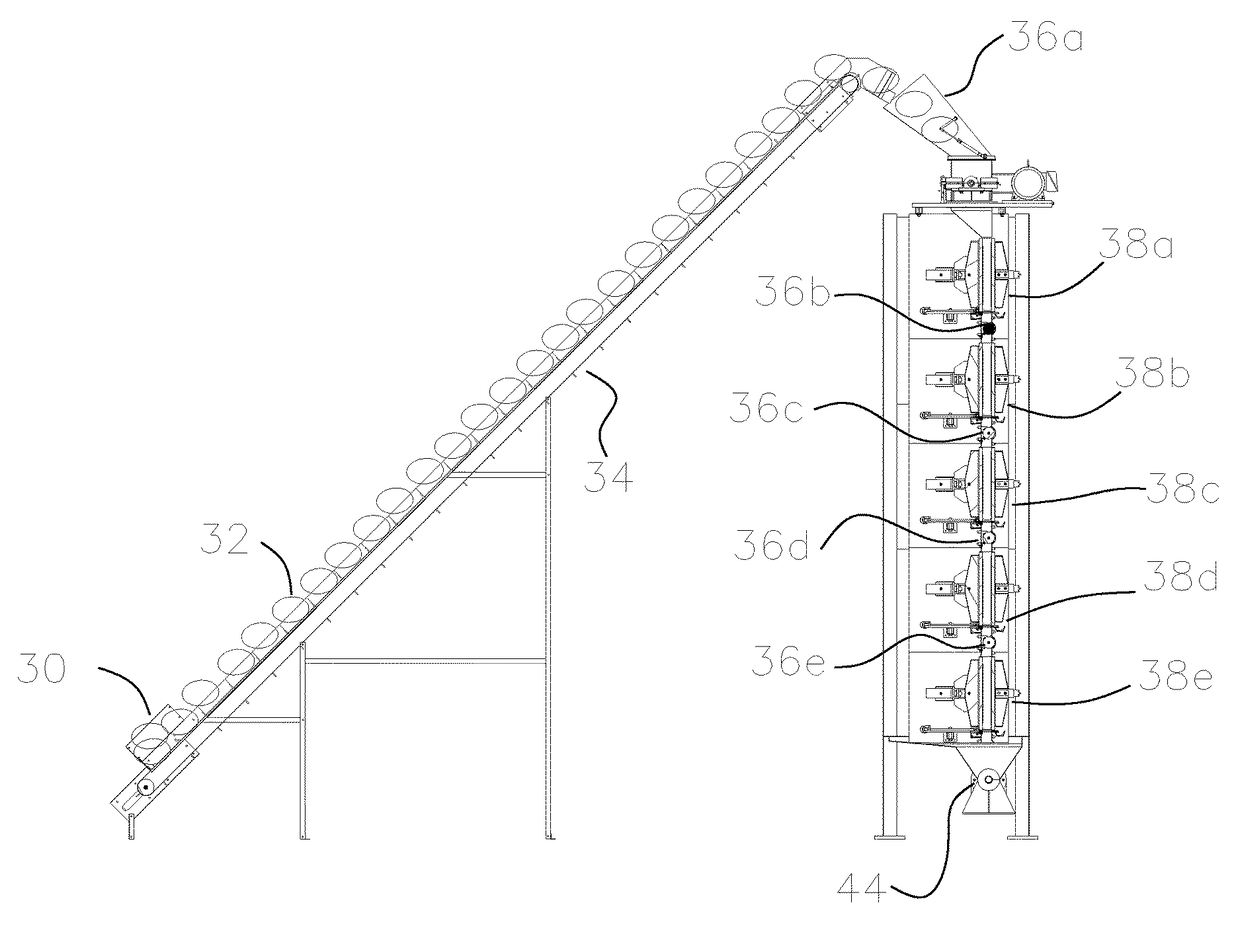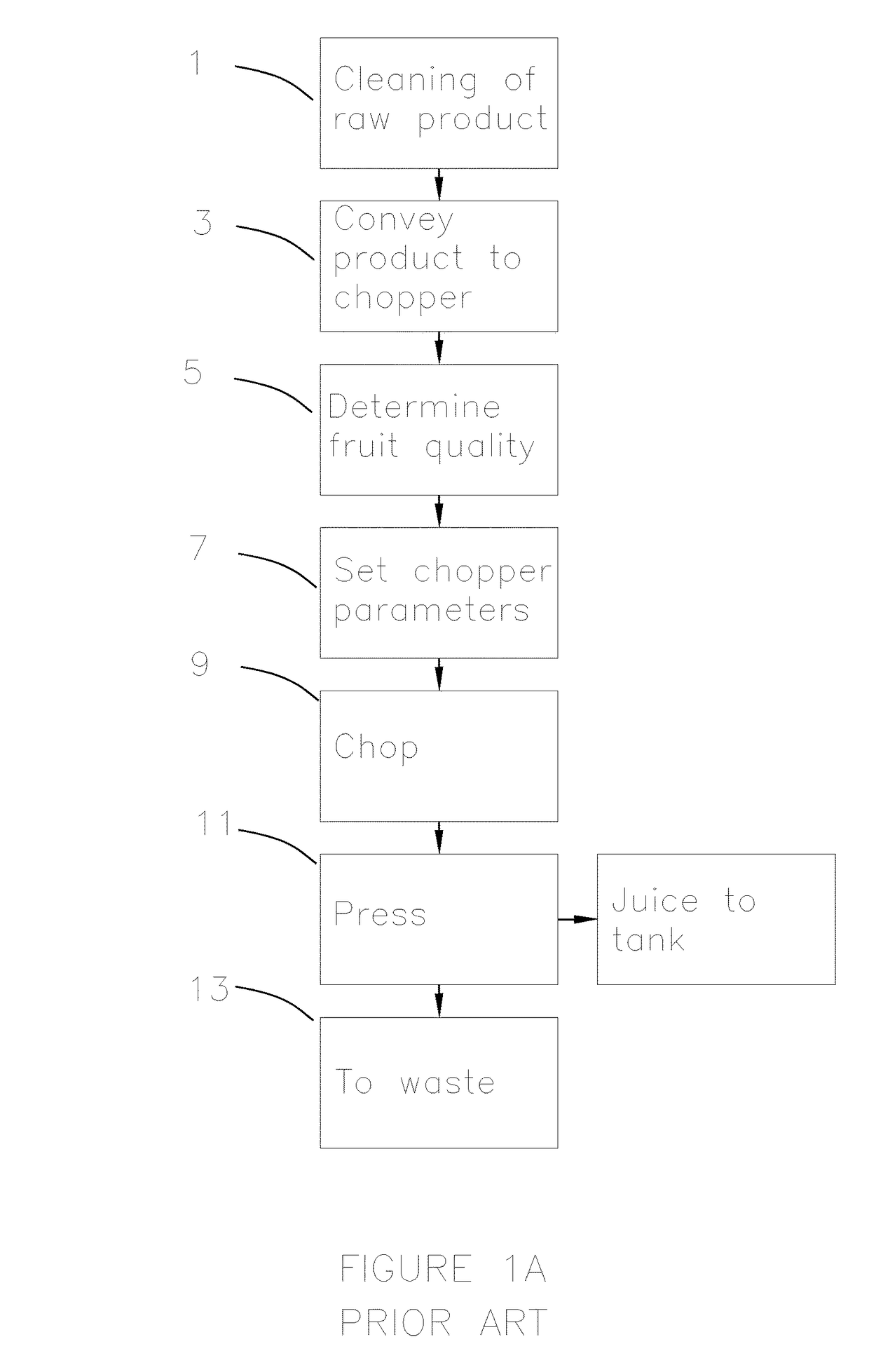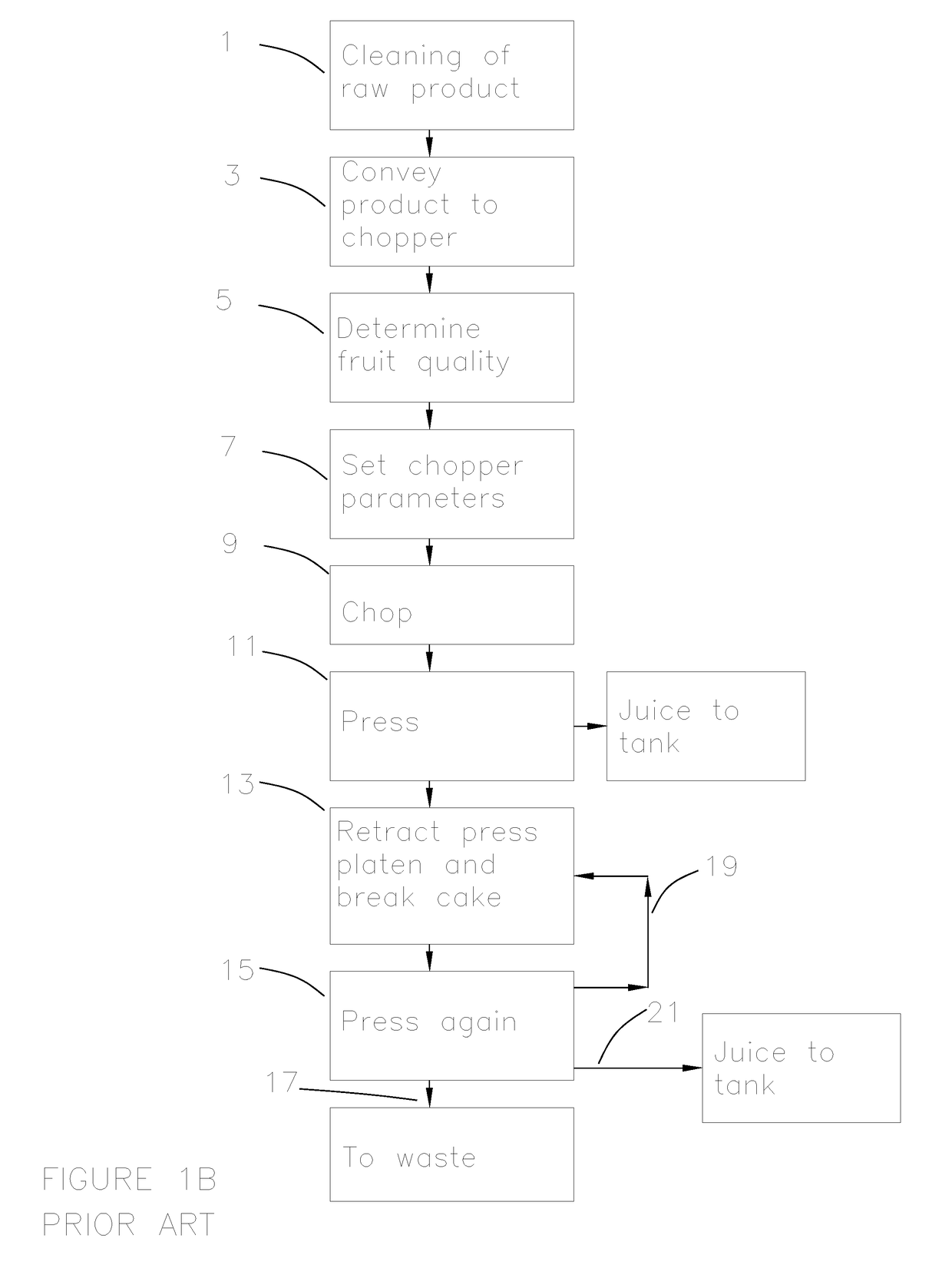Method for multi-stage cutting and juice pressing
a multi-stage, cutting technology, applied in the field of apparatus and methods for extracting juice, can solve the problems of increasing the time between successive pressings, affecting the quality of juice extracted, so as to shorten the pressing time and minimize the tim
- Summary
- Abstract
- Description
- Claims
- Application Information
AI Technical Summary
Benefits of technology
Problems solved by technology
Method used
Image
Examples
Embodiment Construction
[0017]Referring to FIG. 1A, a simple flowchart describes a typical prior art method of processing a food mass such as fruit into juice. In step 1 the incoming food pieces are soaked and washed according to established standards. At step 3 the washed food pieces are passed to a station where a worker evaluates the condition of the food pieces as seen at step 5. Based upon certain known criteria such as degree of ripeness and firmness of the food pieces, the skilled operator will estimate how fine to chop the food pieces and will set the macerator (e.g., chopper) to the desired setting seen at step 7. As discussed above, the finer the chop the greater the juice yield but the higher the chance the machine will become clogged. The operator must therefore be skilled and experienced so as to determine the most effective setting for the macerator based on the condition of the food pieces. Should the food pieces be cut too coarse, the juice yield will be low; should the food pieces be cut t...
PUM
 Login to View More
Login to View More Abstract
Description
Claims
Application Information
 Login to View More
Login to View More - R&D
- Intellectual Property
- Life Sciences
- Materials
- Tech Scout
- Unparalleled Data Quality
- Higher Quality Content
- 60% Fewer Hallucinations
Browse by: Latest US Patents, China's latest patents, Technical Efficacy Thesaurus, Application Domain, Technology Topic, Popular Technical Reports.
© 2025 PatSnap. All rights reserved.Legal|Privacy policy|Modern Slavery Act Transparency Statement|Sitemap|About US| Contact US: help@patsnap.com



